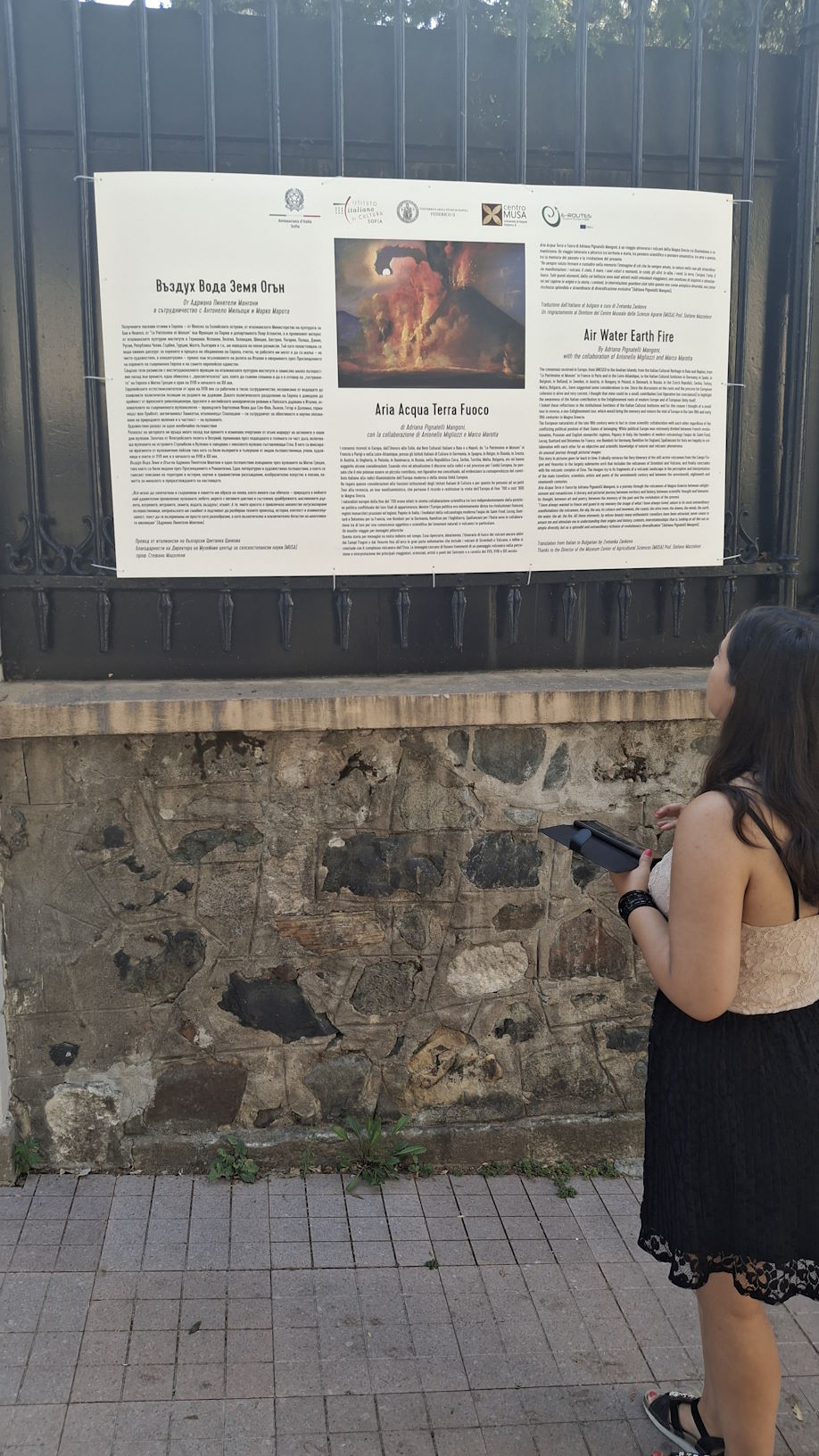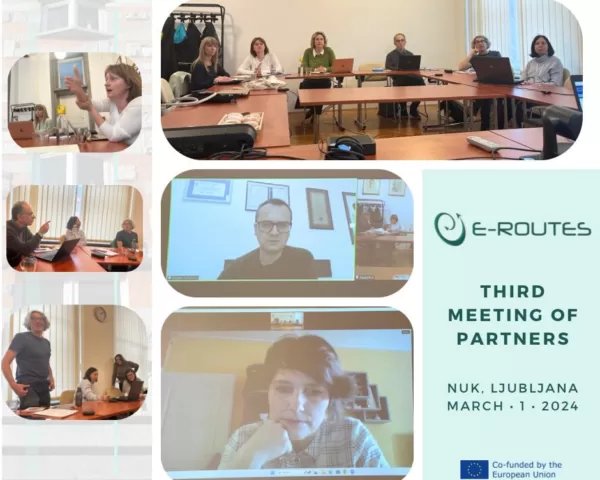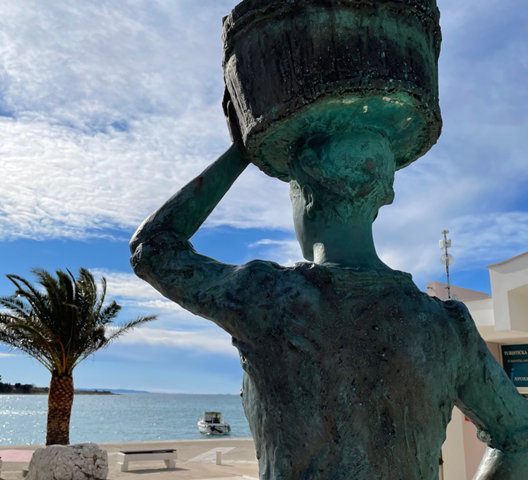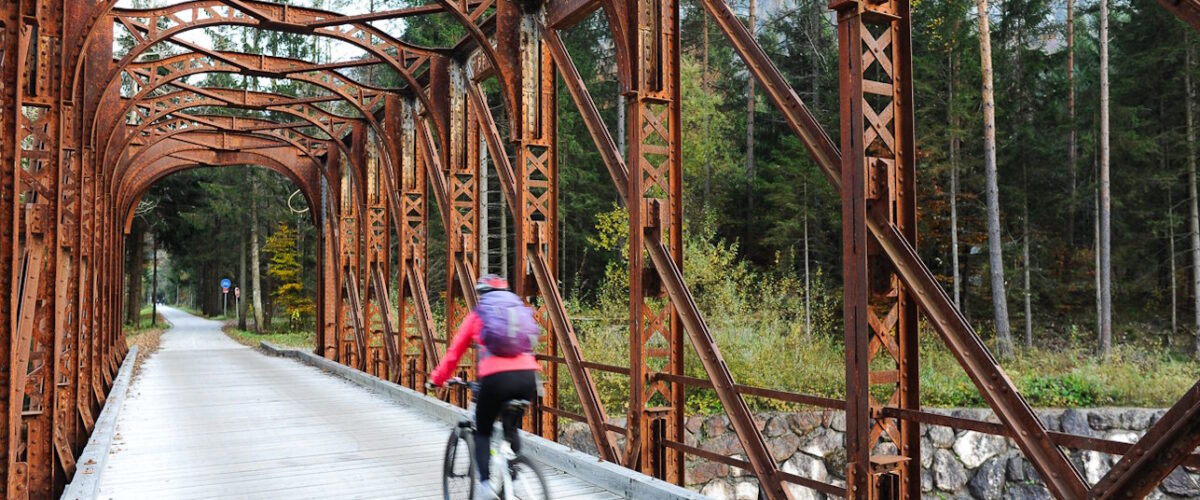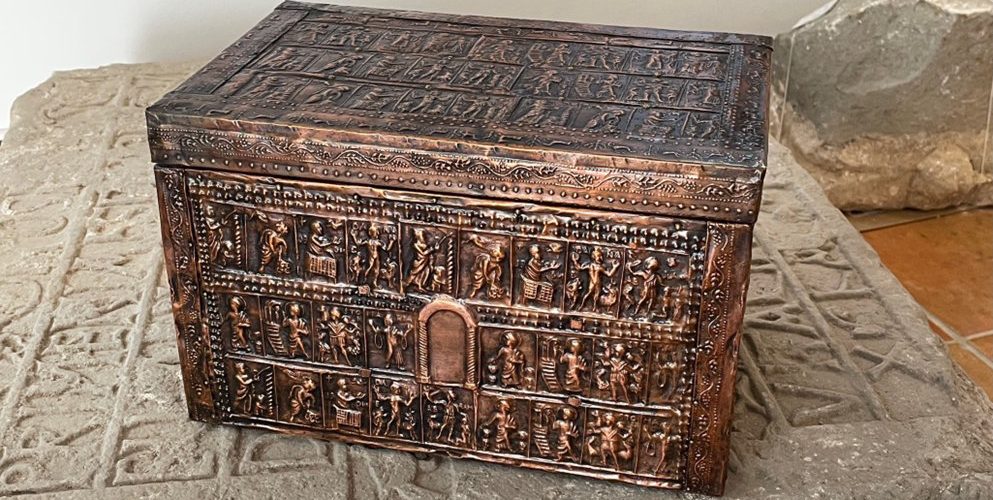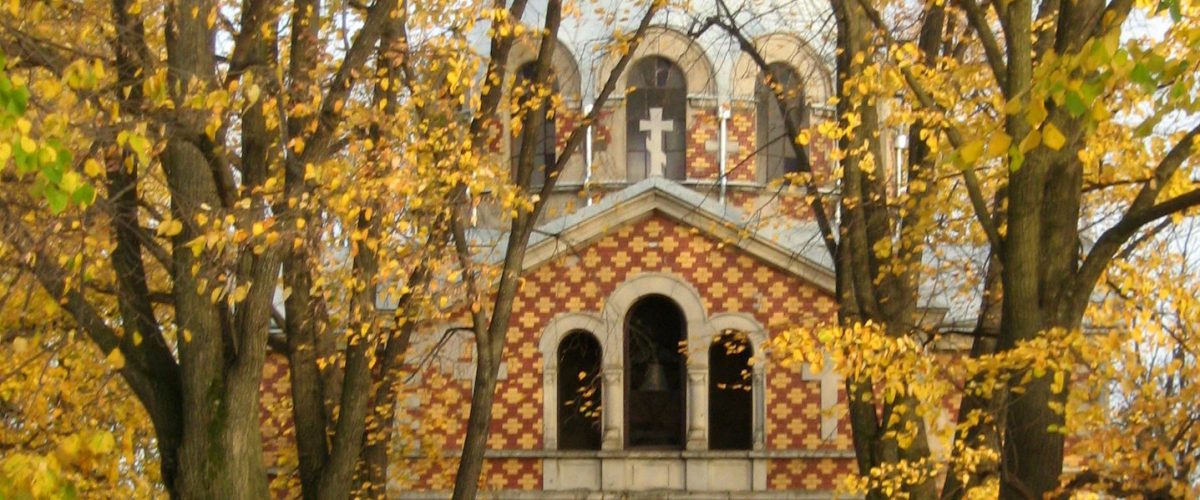The Italian Embassy in Bulgaria and the Italian Cultural Institute in Sofia on 5 September 2024 presented the exhibition “Air Water Earth Fire” by the artist Adriana Pignatelli Mangoni, which tells a story through images that goes far back in time. The project benefits from the curatorial contribution of the Museum Center of Agricultural Sciences (MUSA) at the University of Naples Federico II and its director Prof. Stefano Mazzoleni, who kindly made the digital materials of the exhibition available. The curator of the exhibition is Prof. Antonello Migliozzi, University of Naples Federico II – Museum Center “Museums of Agricultural Sciences” – MUSA at the Royal Palace of Portici, who is also the E-ROUTES project core team member. Within the E-ROUTES projects activities, the gouaches by Adriana Pignatelli Mangoni will be included in the dedicated project’s application, as well as ingested into the Europeana digital library, thus enriching the European travel route cultural landscape.
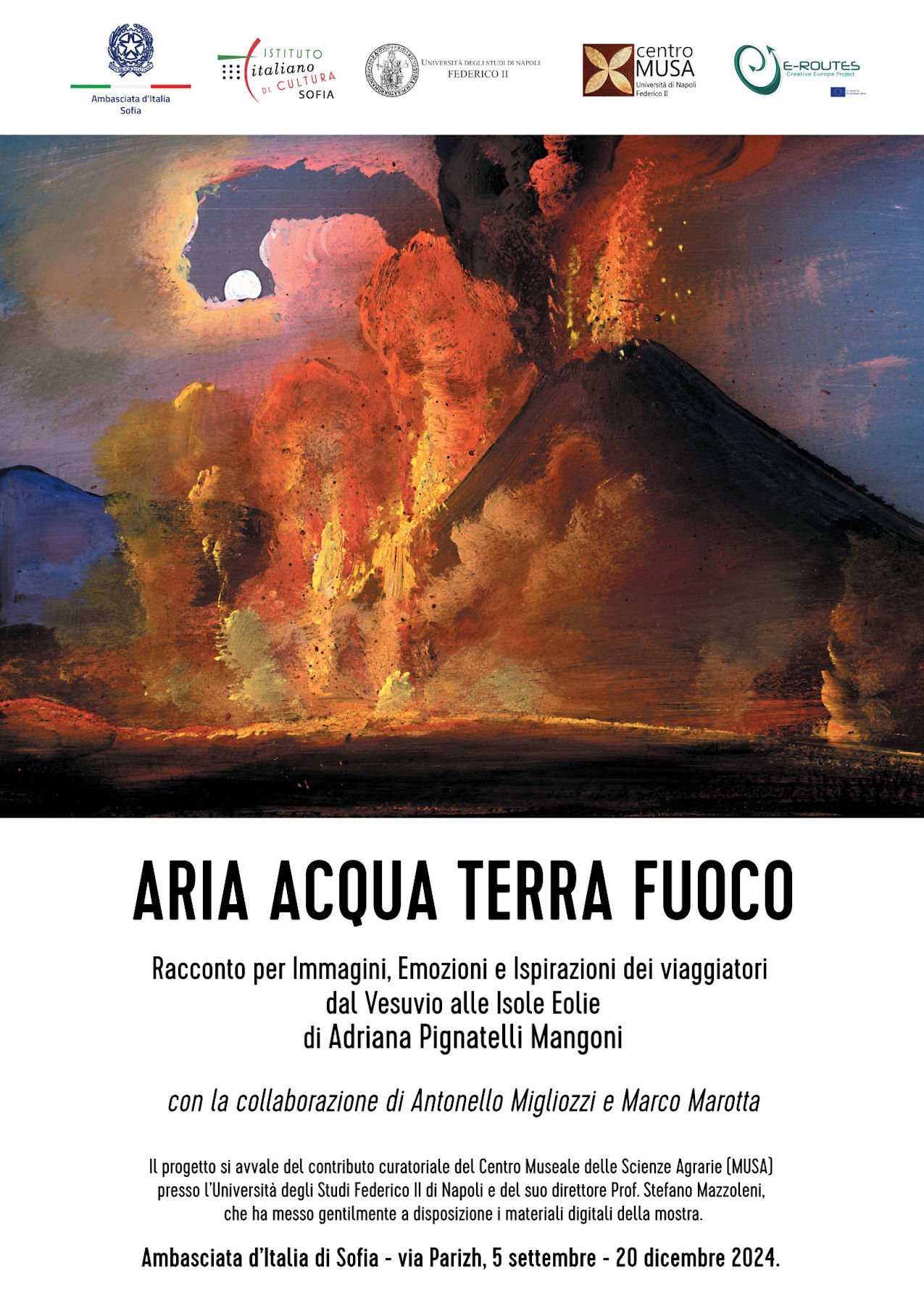
The images ideally retrace the fiery itinerary of the currently active Italian volcanoes that begins with the Campi Flegrei complex and Vesuvius, continues with the largely underwater arch that includes the active volcanoes of Stromboli and Vulcano, and finally ends with Etna. They seek to fix fragments of a volcanic landscape in the perception and interpretation of the main travelers, scientists, artists and poets of the 17th, 18th and 19th centuries, retracing the documents, the “récits de voyage” and the images of the “Grand Tour”.
The pictorial and literary journey between territory and history, between enlightenment and romanticism, between scientific thought and humanistic thought, between art and poetry, between the memory of the past and the revisitation of the present, is condensed into five fundamental stages: Campi Flegrei, Vesuvius, Verso la Sicilia, Sicilia, Mon petit retour. The itinerary of these small gouaches starts from Naples, from Vesuvius and goes first to the northwest, towards the Campi Flegrei, land of fire and water, craters and lakes, mysteries and suggestions. Then it continues to the southeast, from Portici to the plain of Paestum, dominated by the profile of the temples. From here it goes further, towards the sunny and magical South, crossing Magna Graecia, up to Sicily and the Aeolian Islands.
